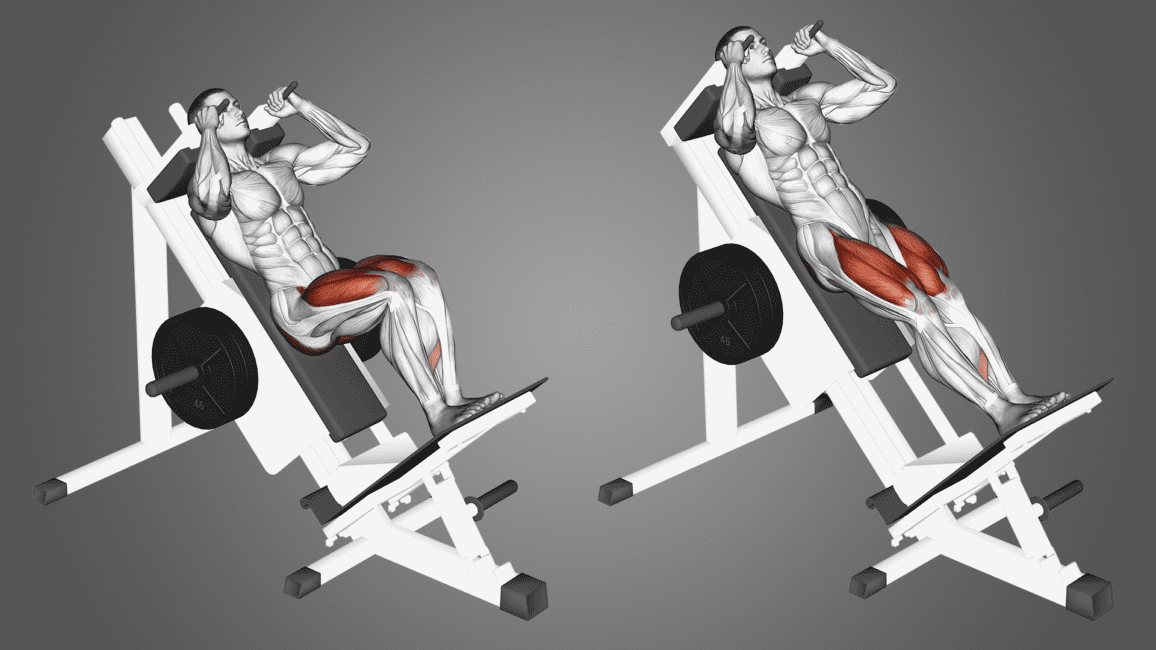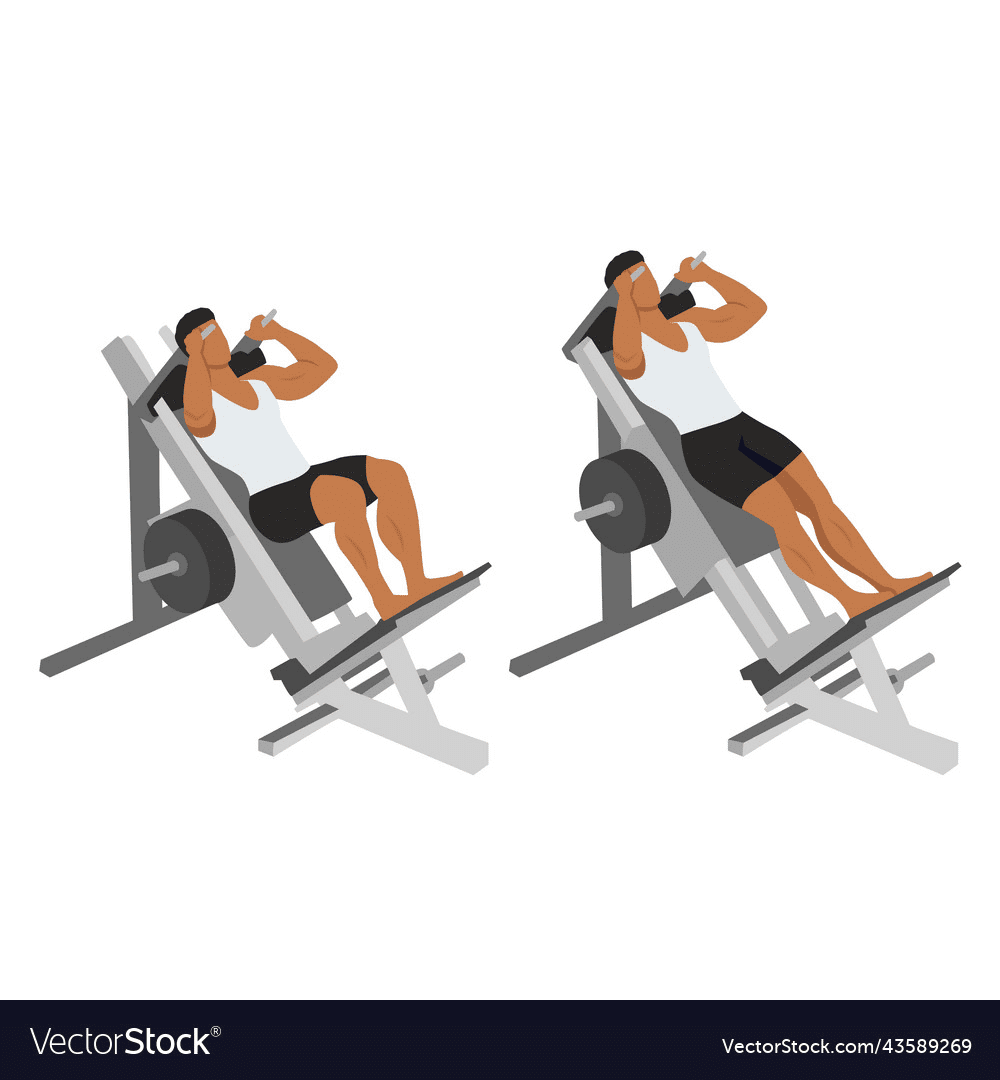Together we explore the Hacksquat, a powerful exercise that can transform your lower body strength and muscle development.
The Hacksquat is a compound movement primarily targeting the muscles in your quadriceps, hamstrings, and glutes. This exercise is performed on a specialized machine designed to provide a controlled and guided range of motion.
Unlike traditional squats, the Hacksquat places less stress on your lower back, making it an excellent alternative for individuals with back issues.
Techniques for Executing a Hacksquat
1. Machine Setup: Start by adjusting the machine to suit your body proportions. Your shoulders should be comfortably placed under the shoulder pads, and your feet should be positioned shoulder-width apart on the platform.
2. Body Positioning: Maintain a neutral spine throughout the movement. Engage your core, and ensure your feet are flat on the platform. This stance provides a stable base, essential for executing the exercise effectively.
3. Depth of Movement: Lower the platform by bending your knees, ensuring they stay in line with your toes. Aim to achieve a 90-degree angle at your knees, but avoid excessive depth that could compromise your form.
4. Driving the Movement: Push through your heels to extend your knees and hips simultaneously. This upward movement engages your quadriceps, hamstrings, and glutes. Keep a controlled pace, emphasizing the mind-muscle connection to maximize muscle engagement.
5. Breathing Technique: Inhale as you descend and exhale as you ascend. Maintaining proper breathing not only helps with oxygenation but also provides stability during the exercise.
Some Hacksquat Variations and Their Benefits
1. Narrow Stance Hacksquat: This variation places more emphasis on the outer sweep of the quadriceps. Keep your feet closer together, and you’ll feel the burn on the sides of your thighs.
2. Sumo Stance Hacksquat: Widen your stance beyond shoulder-width to target the inner thighs and adductors. This variation provides a unique challenge to your lower body muscles.
3. One-Legged Hacksquat: For advanced individuals, attempting the Hacksquat on one leg intensifies the workout, engaging stabilizing muscles and promoting unilateral strength.
Relating the Hacksquat to real-life scenarios, imagine you’re preparing for a hiking trip, and you need to strengthen your legs to conquer challenging terrains.
The Hacksquat becomes your go-to exercise, ensuring your quadriceps, hamstrings, and glutes are robust and ready for the demands of the
Benefits of Integrating Hacksquats into your Workout Regimen
1. Functional Strength: The Hacksquat mimics natural leg movements, making it an excellent exercise for building functional strength.
Whether you’re picking up groceries or navigating uneven surfaces, the muscle engagement from Hacksquats translates into everyday activities.
2. Injury Prevention: By focusing on the quads, hamstrings, and glutes, the Hacksquat helps fortify the muscles that play a crucial role in stabilizing the knee joint. Strengthening these muscles can contribute to injury prevention and improved joint health, especially for those with a history of knee issues.
3. Muscle Symmetry: The guided motion of the Hacksquat machine ensures balanced muscle development. This can be particularly beneficial for individuals who may have muscle imbalances or those looking to sculpt their lower body symmetrically.
4. Metabolic Boost: Compound movements like the Hacksquat engage multiple muscle groups simultaneously, promoting a higher calorie burn. This not only contributes to fat loss but also elevates your metabolism, enhancing overall energy expenditure.
5. Variety in Training: Including different variations of the Hacksquat in your routine prevents workout monotony. It challenges your muscles in various ways, preventing plateaus and keeping your fitness journey dynamic and interesting.
Read Also 5 Reasons to Prioritize Health and Fitness in Schools
Common Mistake to Avoid When Performing Hacksquats

1. Leaning Forward: It’s crucial to maintain an upright torso throughout the movement. Leaning forward excessively can place unnecessary stress on your lower back and diminish the effectiveness of the exercise. If you find yourself leaning, reduce the weight and focus on proper form until it becomes second nature.
considerations associated with integrating Hacksquats into your fitness routine
1. Periodization: To ensure continuous progress and prevent plateaus, consider incorporating periodization into your Hacksquat training. Periodization involves varying the intensity, volume, and frequency of your workouts over distinct phases.
This systematic approach prevents overtraining and keeps your body adapting, promoting sustained growth and strength gains.
2. Recovery Strategies: Hacksquats, like any intense exercise, require proper recovery. Adequate sleep, proper nutrition, and active recovery methods such as stretching and foam rolling play a crucial role.
Implementing these recovery strategies will help mitigate muscle soreness, reduce the risk of injury, and contribute to overall well-being.
3. Goal-Specific Training: Tailor your Hacksquat routine to align with your specific fitness goals. If your focus is on building muscle size (hypertrophy), aim for moderate weights and higher repetitions.
Alternatively, if strength is your primary objective, lift heavier with lower reps. Understanding your goals will guide the intensity and structure of your Hacksquat workouts.
4. Consistency Is Key: Like any aspect of fitness, consistency is paramount. Make Hacksquats a consistent part of your leg training regimen, and you’ll witness cumulative benefits over time.
Track your progress, gradually increase the resistance, and celebrate the milestones in your journey to a stronger lower body.
5. Cross-Training Integration: While Hacksquats are a phenomenal lower body exercise, incorporating a variety of exercises into your routine can provide a more comprehensive approach to fitness.
Include complementary movements such as lunges, deadlifts, and leg presses to address different angles and aspects of leg development.
Relating this to a real-world scenario, we consider a scenario where you’ve set a fitness goal to participate in a long-distance cycling event. While cycling predominantly engages the quadriceps, incorporating Hacksquats into your training regimen can enhance the overall strength and endurance of your leg muscles.
This cross-training approach ensures that your legs are well-prepared for the demands of both cycling and weightlifting, contributing to improved performance and reduced risk of overuse injuries.
In conclusion, Hacksquats are a potent tool in your fitness arsenal, offering numerous benefits when executed with proper form, variation, and consideration for your individual goals.
By incorporating these exercises strategically and adopting a holistic approach to your fitness journey, you’ll not only build a robust lower body but also promote overall health, functionality, and longevity in your physical pursuits.
So, step into the squat rack with confidence, stay committed, and enjoy the transformative impact of the Hacksquat on your fitness journey.
